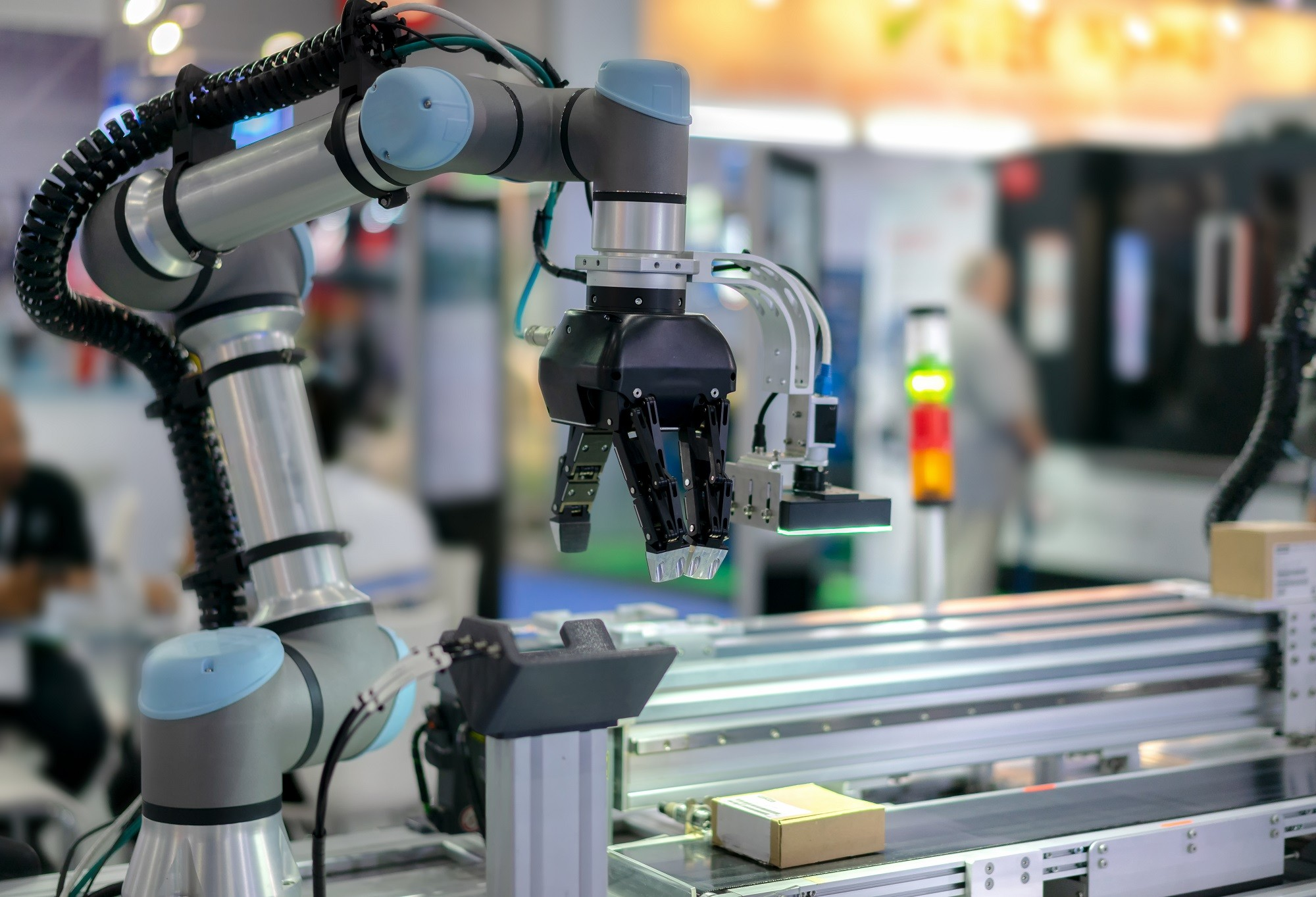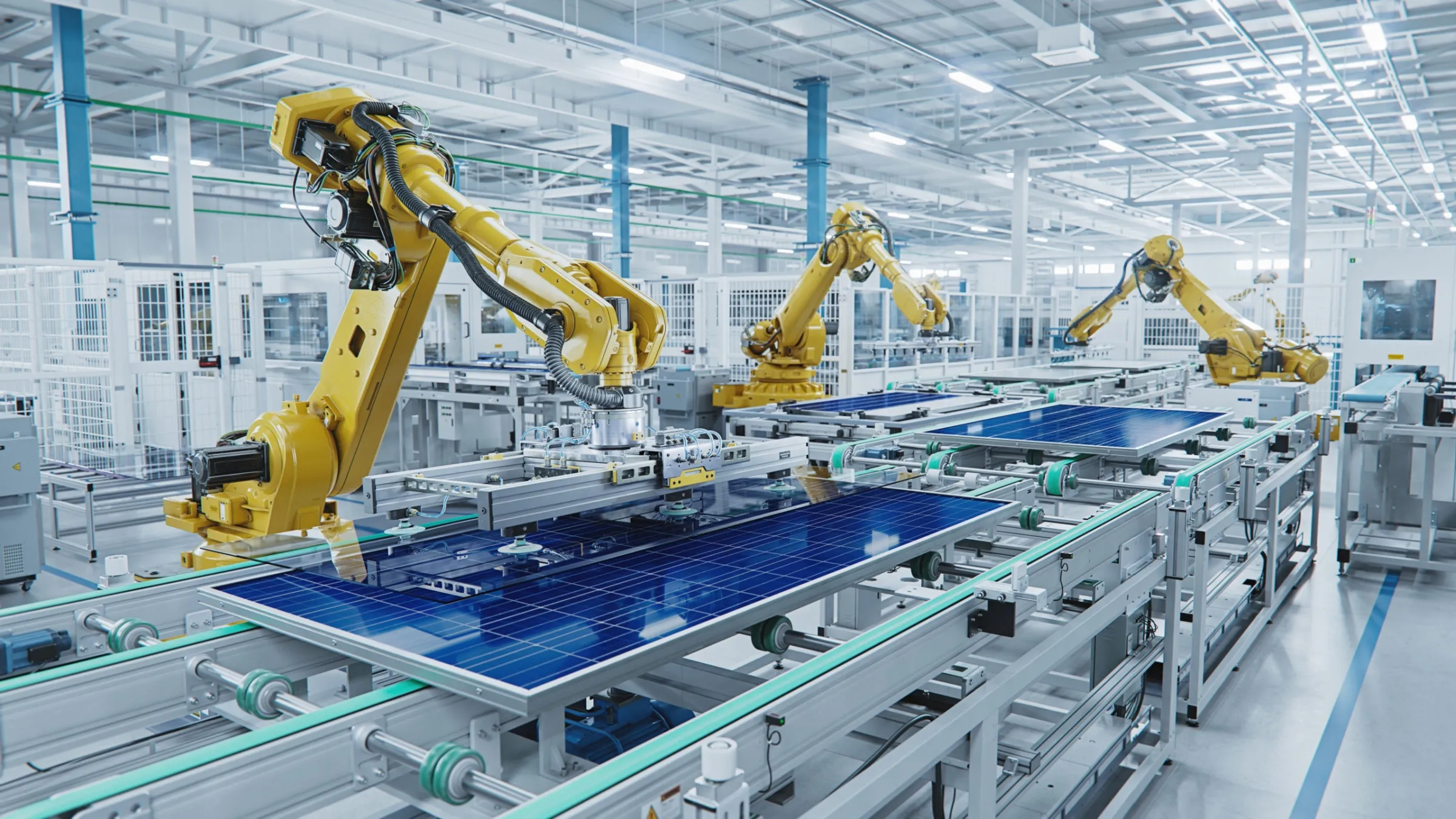Data is the driving force for Industry 4.0. Smart factories rely on data to improve productivity in all aspects of their work, from machine utilization and process workflows to optimized inventory and resilient supply chains. But to guarantee the speed and continuity of operations needed on the factory floor, the connectivity that they use to deliver the data from IIoT devices becomes key. For a manufacturing line, where reaction times can be measured in milliseconds, their connectivity choice can provide faster and more accurate insight and the ability to react before anomalies create production losses.
What type of connectivity do smart factories need?
For the longest time, enterprises used wired connections for machines on the factory floor. But deploying wired networks is quite expensive, time-consuming and complicated in certain environments. Wireless solutions are cheaper to install, easier to scale or modify, and eliminate problems such as routing cables in applications with a high degree of movement. It can increase production flexibility for machines that move and allow for new motion options including drones and automated guided vehicles (AGVs).
Some enterprises opt to rely on WiFi networks for connectivity, but even the new WiFi 6 can’t guarantee a robust and secure connection needed for Industry 4.0. Designed for indoor environments, WiFi networks lack the robustness necessary for industrial applications and services that demand reliable wireless connectivity both indoors and outdoors, requiring near-flawless reliability. Losing Wi-Fi signal and having dead spots can cause problems that impact the whole production chain.
Another wireless connectivity option is using cellular networks. With the emergence of 5G, they can support a vastly greater number of devices, provide smoother handoffs between radios, and guarantee better security thanks to enhanced encryption. Moreover, Bosch’s experience shows that it can ensure 99.9999% reliability inside factories. In its 2023 guide on smart factory requirements, Oracle directly mentions 4G/5G wireless networking as an essential technology for smart manufacturing.

Private cellular networks
Though cellular connectivity offers sufficient reliability, scalability, latency and bandwidth for almost any type of manufacturing applications, in some cases public networks may not be an option for reasons of security or coverage (e.g., remote locations or special requirements regarding indoor connectivity). To overcome these challenges, enterprises deploy private cellular networks.
According to ABI Research forecast, manufacturing will experience healthy growth in private cellular IoT connections in the next 5 years, and by 2030 will have 108 million connections – more than any other industry. Mission-critical use cases are driving interest in private LTE and 5G networks. As any interruption in the operations could lead to significant revenue loss or threaten human life, most mission-critical IIoT customers upgrading to wireless connectivity will choose a private cellular network.
While private networks can solve all connectivity problems at the production site, oftentimes it is important that devices remain connected both when they are using a private network and when they roam on public networks. Some may need to travel between two sites where private networks are deployed, some may use public networks as a backup if their connection with the private network is lost.
How smart factories use cellular connectivity
There are multiple cellular connectivity enabled use cases that we described in one of our previous posts. Their real-life implementation is becoming mainstream, here are just a few recent examples:
- Airbus is rolling out a private cellular 5G network at its commercial aircraft production locations, with A350 and A321 final assembly lines in Toulouse already connected. The network can achieve a throughput of up to 1.4 gigabytes per second, four times more than the current Airbus WiFi. It helps to improve operators’ work efficiency and productivity: they can input machine data to a mobile device instantaneously, whereas previously they would need to return to their workstation to manually log information. The network also supports autonomous guided vehicles that transport fuselage sections or drop off tools and assembly kits, and is used for secure communications by on-site security teams and firefighters.
- Tesla said it has constructed a private cellular network at its factory in Berlin and is ready to deploy the technology across its production facilities worldwide. The network supports speedy, low-latency connections and can work indoors and outdoors, which is critical to the company, because it allows to update hundreds of cars outside without needing to run fiber and power to outdoor locations. Tesla also sees private 5G as a foundation for innovation and next-level operations at its manufacturing and warehouse facilities.
- A 5G fully-connected factory was opened this year in Thailand by Chinese home appliance manufacturer Midea. Each production phase is seamlessly connected through 5G terminals to enable faster machine operation. The network enables real-time monitoring and analysis of production devices, enhanced flexibility and adaptability of AGVs which significantly improves their operational efficiency in complex factory environments, remote control of robotic arms via 5G smartphones, AI inspections and operating room performance. According to the specialist that participated in the project, compared with other technologies, 5G was the only technology allowing network coverage over 160,000 square meters covering 3 production plants.

How cellular connectivity enables new cutting-edge technology applications
It is also worth noting that cellular technology not only helps enterprises solve their existing connectivity tasks. Wherever deployed, it also allows for facilitating new applications and creating valuable insights, which in turn, create new opportunities. This is particularly true in regard to 5G and 5G Standalone, which enable smart industrial systems that support industrial robotics, machine vision and AI.
- As we have seen in the recent implementations of cellular connectivity, smart factories install many different types of robots, both stationary and mobile. There are robotic arms and automated guided vehicles that transport goods or materials, and sometimes fully autonomous robots. Cellular connectivity can be particularly beneficial for large production sites with robots moving between different locations, because it can guarantee coverage both inside and outside of buildings and low latency to ensure real-time data transfer. Surprisingly, even fixed and wired robotic arms may need cellular connectivity, since workers use their smartphones to start and control production processes.Korean giant LG Electronics is known for using cellular connectivity at its home appliance manufacturing plants. Its Lighthouse factory in Clarksville, Tennessee, leverages a cellular network for 166 AGVs and autonomous mobile robots (AMRs) to handle logistics and transport materials autonomously. Connected robots are also employed for complex tasks such as assembling components, welding, and lifting heavy parts to enhance workplace safety and productivity. Several years before, LG implemented 5G at its factory complex in Changwon, South Korea, so cellular connectivity not only enables seamless communication between robots, machines and systems, but also provides a platform to scale up as LG’s Industry 4.0 ambitions grow.
- One of the most illustrative examples of how machine vision systems can benefit from cellular connectivity can be found in last year’s collaboration between AWS, Ericsson and automotive component manufacturer, Hitachi Astemo. At the latter’s plant in Kentucky, the cameras were set up on a live production assembly line that produces electric vehicle components. Real-time video of the component assembly operation was fed via a 5G network to an edge device running video analytics. By using cellular connectivity rather than traditional network technologies the installation was completed in three days.Using high-definition 4K cameras, the computer vision configuration was able to observe defects at the sub-millimeter level— far greater visibility than would be possible with the human eye. The high throughput and low latency of 5G were key to uploading huge volumes of video data from the cameras to the cloud edge platform for analysis and decision-making. For mission-critical use cases such as defect detection on a manufacturing line, millisecond-level latency is needed, which 5G can provide. Security is also essential, which is why communication is handled using encryption and various authentication protocols throughout the 5G infrastructure. Computer vision using a 4K video stream and the high bandwidth of 5G could inspect 24 parts simultaneously, compared with conventional approaches that inspect them one by one.
- Cellular networks, 5G in particular, offer low latency and high bandwidth. They can handle expansive IoT networks and transmit large quantities of real-time data. As a result, organizations can access more real-time data and create more accurate digital twins.
At its pilot manufacturing facility in Dunton, Essex, UK, Ford is using cellular connectivity for multiple solutions including real-time analysis of machine performance and managing responses to changing conditions during the production process. As any variation in the repetitive process of assembling automotive parts affects the quality of the output and any downtime costs money, AI-based predictive maintenance was deployed to spot defects and reduce downtime. Maintenance optimization to identify and replace parts before they fail needs to be supported by ultra-reliable connectivity. Also, low latency is required to enable the factory to react quickly so that settings on machines can be changed in milliseconds to continuously optimize production quality.Ford utilizes 5G-connected sensors for real-time monitoring and control of laser welding for hairpin joining in electric vehicles and battery-bus-bar joining. Leveraging the 5G network, Ford creates digital twins to oversee the welding operations. Given that manufacturing a motor and battery for an electric vehicle requires around 1,000 welds, the process can generate up to 500,000 data points per minute. The AI-based system checks 192 welds per part at least 3 times per cycle and each time the machine processes data within milliseconds. To do that, it needs access to many gigabytes of information, and 5G enables handling these large volumes of data with greater ease. This enables the firm to continuously monitor the entire production process and make automatic adjustments in response to changes in input materials, environmental conditions, and other factors.

Webbing’s cellular connectivity solutions
Webbing offers connectivity solutions that ensure global access to reliable and high-quality internet, with low latency and the best of class coverage. We provide secure and continuous internet connection for IIoT devices, wherever they need it.
Webbing’s partner network of over 600 mobile operators worldwide guarantees global coverage. It allows to roam on several carriers’ networks in every region, solving the problem of weak spots that any mobile network may have and ensuring full coverage and continuous connectivity even at remote locations.
Webbing is a global connectivity provider with a distributed full core network with local breakouts, multiple network solution, and data server redundancy that provides connectivity stability and low latency. As such, Webbing’s network is well suited to support mission-critical, high-data consumption type of use cases at smart factories. Besides, it gives enterprises the ability to quickly scale their deployments or adjust their existing devices fleet management to any business scenario. The network fully supports all cellular technologies including 4G and 5G.
Our WebbingCTRL solution allows enterprises to connect their IIoT devices to private networks and seamlessly switch to public networks whenever devices travel outside corporate sites or connection to the private network is lost. It relies on eSIM technology with management capabilities that can easily and remotely be configured with private and public wireless profiles. It uses embedded or removable form factors, making integration easier. eSIM technology with management capabilities that can easily and remotely be configured with private and public wireless profiles. It uses embedded or removable form factors, making integration easier.
WebbingCTRL ensures failover connectivity with the capability of using multiple mobile carrier profiles, easily changing carriers at any time with zero integration, and an option to fall back from a failing profile to a different profile without any need to communicate with a remote server.
It also provides a centralized way to manage eSIMs/SIMs lifecycle and profile inventory, as well as visibility into device data usage. Companies can set up business rules that would allow devices to change the network automatically under specific conditions, such as location, country, loss of connectivity or even after a certain amount of time. WebbingCTRL platform can work with both SGP.32 and SGP.22 standards, and also supports M2M devices for relevant use cases. It provides a single pane of glass to manage all devices deployed regardless of the standards used.
With WebbingCTRL, global enterprises that need access to several private and public networks can ensure continuous data connectivity for their devices. Easily set business rules on the WebbingCTRL Platform help determine automatic profile allocation based on location and enable fallback mechanisms in case of private network failure or coverage issues.
WebbingCTRL streamlines enterprise data connectivity. It makes connectivity implementations simple, scalable, and sustainable with one SKU, zero-touch provisioning, and a single portal to manage all your deployments. It is device agnostic, cost-effective, and future ready. More than 1 million WebbingCTRL eSIMs/SIMs have already been deployed globally since its release.
Reach out to learn more about our connectivity solutions.
The post The Power of Cellular Connectivity in Industry 4.0 appeared first on Webbing.


